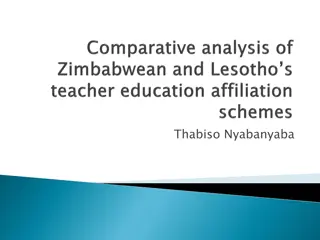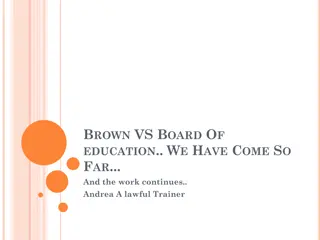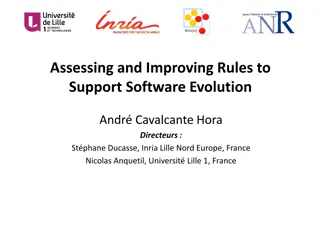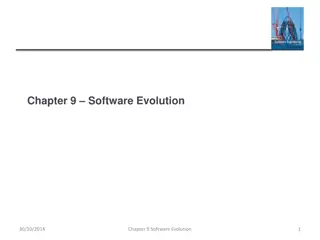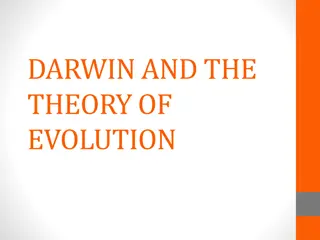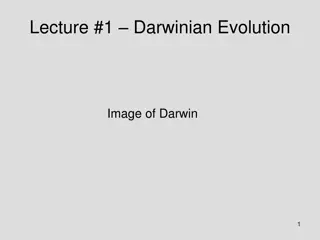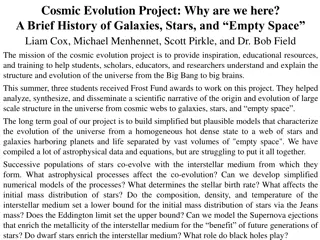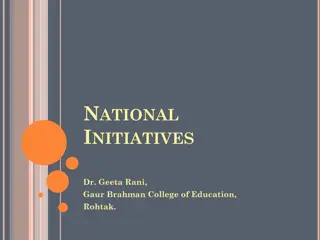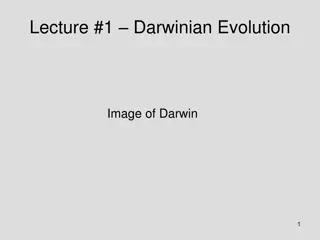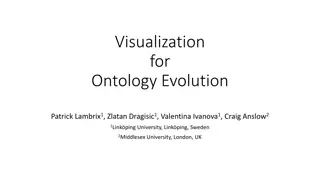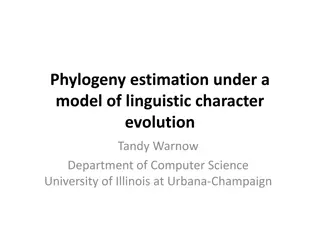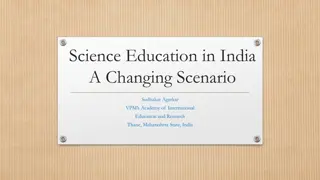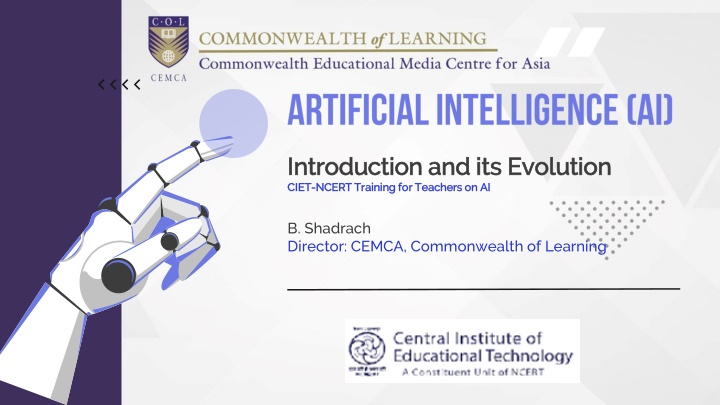
Evolution of Artificial Intelligence in Education
Explore the evolution of Artificial Intelligence (AI) in education from its theoretical foundations to the implementation of AI technologies in teaching and learning. Delve into the role of AI in transforming traditional educational paradigms and enhancing student-centered approaches through intelligent tutoring systems, teaching robots, learning analytics, and adaptive learning systems. Discover the impact of AI on education in the 21st century, bridging the gap between human agency and innovation-driven knowledge.
Download Presentation

Please find below an Image/Link to download the presentation.
The content on the website is provided AS IS for your information and personal use only. It may not be sold, licensed, or shared on other websites without obtaining consent from the author. If you encounter any issues during the download, it is possible that the publisher has removed the file from their server.
You are allowed to download the files provided on this website for personal or commercial use, subject to the condition that they are used lawfully. All files are the property of their respective owners.
The content on the website is provided AS IS for your information and personal use only. It may not be sold, licensed, or shared on other websites without obtaining consent from the author.
E N D
Presentation Transcript
Introduction and its Evolution Introduction and its Evolution CIET CIET- -NCERT Training for Teachers on AI NCERT Training for Teachers on AI B. Shadrach Director: CEMCA, Commonwealth of Learning
COLs mission is to help governments, institutions and organisations expand the scale, efficiency and quality of learning by using appropriate open, distance and technology-based approaches. COL aims to build on its expertise in ODL, OER and TEL to play a more influential role in national policy development and implementation; invest in innovations and research; support the digital transformation of institutions and organisations; promote gender equality; and implement a rigorous monitoring and evaluation plan. Gratitude are due to Professor Amarendra Behera, Dr. Angel Rathnabhai, Ms. Nabeela Ata and Dr. Papiya Upadhyay
Evolution, Theoretical Foundation and Conceptual Framework The Steer for AI in Teaching, Learning and Evaluation process Technology-enabled Learning in the 21stCentury Technological advances witnessed each day Direct cognitive learning among learners The role of educators in a changing world
Education in the 21stCentury is different Brick and mortar to Ubiquitous contexts Less didactic and more self-driven; New pedagogical methods Learner centeredness and lifelong learning phenomenon Technology-enabled learning adds new dimension Augmented, Virtual, Extended Realities Human-Computer Interactions New Instructional Design Artificial Intelligence adds to the differences Intelligent tutoring systems and Teaching Robots Learning Analytics and Dashboards Adaptive Learning Systems Theoretical, pedagogical and computational aspects of AI Use of AI techniques in learning and instructions The role of human agency in innovation-driven knowledge age Teacher in the Loop AI
Evolution, Theoretical Foundations, Conceptual Research, Implementation
Reactive AI Limited Memory AI Theory of Mind AI Self-awareness AI General Intelligence AI 1950-70: Mimic era 1970-90: Two winters 1990-2010: Resurgent era 2010 - : Present era Logic Probablity Machine Learning Data Mining
Define Gather Data Choose Algorithm Train and Test System Deploy Rule-based System Expert System Neural Network Genetic Algorithm
As a component of Teaching, Learning and Evaluation process
Incomparable resource Moore s Law working? Again, Moore is alive? Learners demand for experience Scaling and widening, and narrowing Improving outcomes
Work and impact Weaponization Weakening of institutions Challenge to basic rights Ethics and Bias Inflexible No creativity Vulnerable Panacea Threat Divide
As a component of Teaching, Learning and Evaluation process
In Teaching/Learning? In Assessment? In Outcome-based Education? To Teachers? In Teaching/Learning? In Assessment? In Outcome-based Education? To Teachers?
Personalisation Diversity, Equity and Inclusion New Experiences - Virtual Tutors, Chatbots, Gamification Information and Media Literacy AI powered grading AI as a buddy for feedback AI powered assessments Adaptive Assessments
Health care Manufacturing Retail Finance Gminsights.com
Teachtough.com Ditchthattextboo.com Pintrest.co.kr Meghnaunni.com
We wish to shape-up the AI world; In doing so, lets consider the following determinants: Technologists Technologists, whop are bent upon disrupting the world Market place Market place, , that tunes itself to 21stCentury cultures and practices Learners Learners, , who require to be adaptive and creative
"Artificial intelligence is the future of education." - Sugata Mitra "AI has the potential to revolutionize education by providing personalized learning experiences, making it more engaging and effective." - Sal Khan "AI can help to prepare students for the jobs of the future by teaching them the skills they need to be successful in a rapidly changing world." - Andrew Ng
Dr B. Shadrach, Director, COL-CEMCA bshadrach@col.org +91 9871119726 www.col.org




